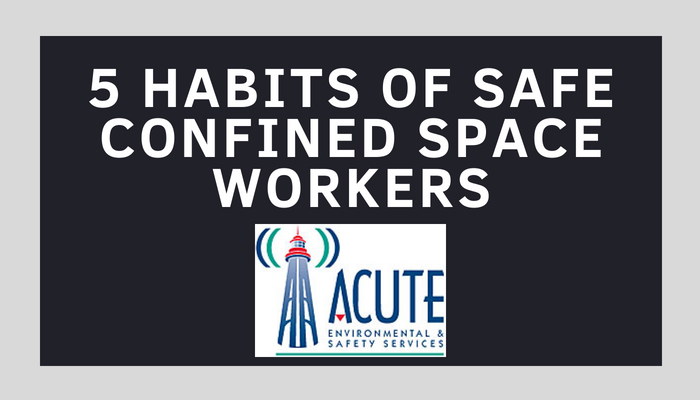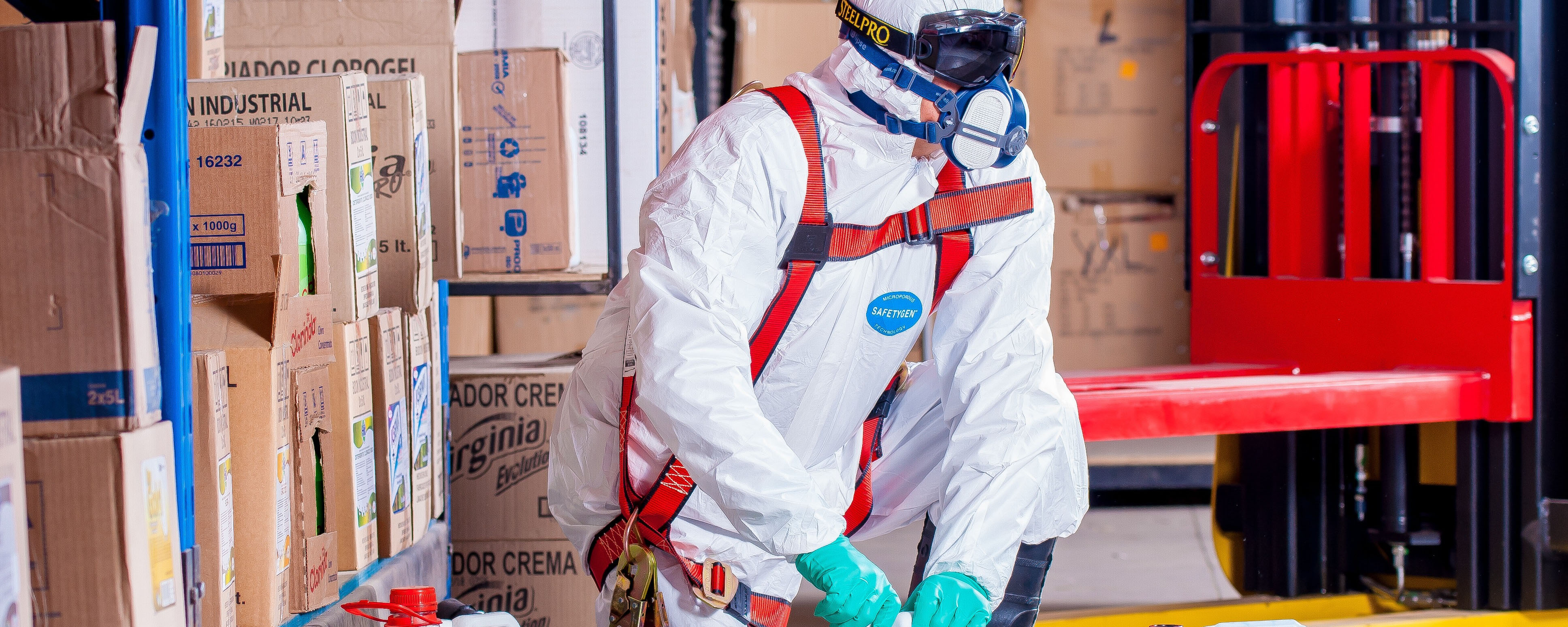
Confined space workers regularly enter fully or partially enclosed spaces that are not designed and constructed for continuous human occupancy. They may also present atmospheric hazards because of their construction, location, contents, or because of the work that is done in them. Contact the experienced professionals at ACUTE Environmental and Safety Service to get you trained and keep you safe on the job, and keep reading to discover five habits of safe confined space workers.
5 Habits of Safe Confined Space Workers
1. General Awareness
Many who are injured or even die in confined spaces simply aren’t aware of the potential hazards contained within. Confined space workers are given a task, and they simply go ahead and attempt to perform it.
According to W. Jon Wallace – also known as “The Safety Guru“ – the first step in confined space awareness should be conducting an assessment to identify all permit-required confined spaces and identifying the spaces with proper signage.
Once that is complete, employees need to receive awareness training on the potential hazards of confined spaces and the confined space entry requirements of the facility.

2. Atmospheric Testing
Approximately 56 percent of confined space fatalities are caused by inadequate air quality.
Low oxygen is the leading cause of death due to atmospheric hazards, followed by hydrogen sulphide. Additional hazards include methane gas, inert gases, sewer gases, and carbon monoxide.
All potential atmospheric hazards must be identified and the atmosphere tested with a combustible gas meter prior to entry.
In addition, the air needs to be retested periodically to verify that the air remains safe for confined space workers.

Leif Skoogfors/FEMA
3. Isolating Energy Sources
As a follow up to safe habit No, 2, all energy sources must be properly isolated prior to entry using a process called lockout / tagout, explained here by the Environmental Health & Safety department at the University of California, Santa Barbara:
“Lockout-Tagout refers to the safety procedure used in industry and research settings to insure that dangerous machines have been properly shut-down and are incapable of being started up again prior to the completion of maintenance or servicing work. It requires that all hazardous energy sources have been (1) identified (2) isolated and (3) rendered inoperative to prevent the release of potentially hazardous energy prior to the start of any repair or maintenance procedure.”
Here’s a handy graphic to remind confined space workers of these energy sources:
4. Confined Space Entry Permits
According to the Ontario Ministry of Labour, Immigration, Training and Skills Development, “the employer shall ensure that a separate entry permit is issued each time work is to be performed in a confined space, before any worker enters the confined space.”
An entry permit for confined space workers should include at least the following:
- The location of the confined space,
- A description of the work to be performed there,
- A description of the hazards and the corresponding control measures,
- The time period for which the entry permit applies,
- The name of the attendant described in section 15,
- A record of each worker’s entries and exits,
- A list of the equipment required for entry and rescue, and verification that the equipment is in good working order,
- Results obtained in atmospheric testing under section 18,
- If the work to be performed in the confined space includes hot work, adequate provisions for the hot work and corresponding control measures.
An example of such a permit can be found here: Confined Space Entry Permit
5. Confined Space Training
Last but certainly not least, confined space workers need proper training and refreshers prior to taking to the job. That includes Confined Space Entry Awareness for those going in as well as Confined Space Entry Rescue for those staying behind to monitor the situation.
The entry awareness program typically familiarizes a participant with the requirements of Ontario Regulation 632/05 – Confined Spaces and is intended to provide entrants, attendants, and competent persons the skills and training required to recognize confined space entry risks and how to establish measured and corresponding controls.
Participants will have the opportunity to become familiar with, inspect, and use Confined Space Entry (CSE) access equipment and air quality instrumentation. This is done through classroom interaction with experienced instructors, performing hazard assessment and applying appropriate control measures, demonstration and hands-on training in the inspection, care and use of personal protective and rescue equipment, and detailed handouts, videos, and quizzes.

For more, be sure to check out Confined Space Training: The Ultimate Guide.
Confined Space Workers Trust ACUTE!

Hands-on, practical confined space training is the best way to keep employers and workers safe in the workplace!
ACUTE is dedicated to workplace safety and understands the importance of course and training provider approval.
ACUTE offers many training courses to help workers, employers, and everyone else involved stay safe on the job.
Trust ACUTE to provide the following:
- Open Door Instructor-Student Partnership – ACUTE’s training services emphasize client participation. Staff want to build relationships with clients and serve as a touchstone for advice anytime moving forward.
- Serving Your Team and Industry – With a vast array of clients in manufacturing, construction, health, academic, and government agencies, ACUTE brings the best safety practices from across the spectrum to your workplace.
- 100 Years of Combined Experience – ACUTE provides comprehensive health and safety training, on-site safety services, and consulting services. With over 100 years of combined experience, our staff offer more than theoretical or abstract ideas. ACUTE offers solutions.
- Track Record of Success – ACUTE is rated 4.9/5 stars on Google reviews, demonstrating a commitment to our clients, quality, and passion for training.
“By far the best place for training. They offer several different types of training and are very professional. I have been doing my joint health and safety committee training this week and could not be more satisfied. Patrick has been teaching the class and he’s an awesome teacher. He’s funny, knowledgeable and cares about what he’s teaching. So many classes like these can be boring and drag on but tomorrow is day 5 and I feel like the week flew by.”
Sources:
http://www.workplace-safety-nc.com/articles/Five-Confined-Space-Habits.html
http://www.ehs.ucsb.edu/general-safety/energy-isolation-lock-out-tag-out
https://www.labour.gov.on.ca/english/hs/pubs/confined/cs_10.php


